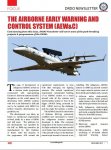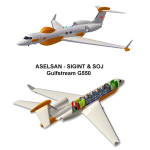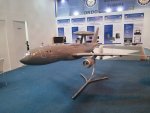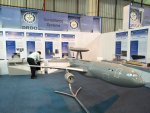Procurement delays leave IAF with only 3 AWACS as PAF races ahead
Securing the nation's airspace could soon become a more challenging task for the Indian Air Force, as it faces delays in inducting additional airborne warning and control aircraft, even as Pakistan is slated to see its own fleet of such aircraft increase by year-end.
The deal for two more Phalcon AWACS, which are to be procured under a three-nation deal involving India, Israel, and Russia, is stuck because of a sharp escalation in the price of the Russian aircraft that will house the Israeli sensors, The
Times of India reported on Tuesday. Citing sources, the national daily said that while the government was ready to pay close to $800 million for the two AWACS, the price being demanded by the original equipment manufacturers was $1.3 billion.
According to one of the sources quoted by the report, Russia "has majorly jacked up the prices" for the IL-76 aircraft, "which is unacceptable to the government".
Currently, the Air Force operates just three
Phalcon AWACS — Israeli Aerospace Industries' third-generation airborne early warning and control systems, called ELW-2090, installed on a Russian IL-76 heavy military transport aircraft.
The deal is hanging fire even as the end of 2017 approaches. In March of 2016, the Cabinet Committee on Security (CCS) had
cleared the proposal to acquire two more
Phalcon AWACS at a cost of Rs 7,500 crore.
The shortage of
AWACS comes at a time when Pakistan is expanding its own fleet of these vital platforms.
In May this year, citing the Pakistan Air Force's (PAF's) chief, Air Chief Marshal Sohail Aman, the
Air Forces Monthly magazine reported that the country would receive three new Saab 2000 Erieye
AEW&C aircraft from Sweden. According to the report, the first aircraft would be delivered in December 2017 and the remaining two would arrive next year. The PAF's
AEW&C fleet is currently made up of three Erieye and four Chinese Karakoram Eagle ZDK-03 aircraft. Citing an unnamed source, the
ToI report said that China had over 20 such
AWACS.
An indigenous solution, the two such platforms under the AWACS-India project, would only be ready by 2024-2025 at the earliest, the
ToI report said. Under the project, an indigenous active electronically scanned array (AESA) radar with 360-degree coverage will be mounted on Airbus A-330 wide-body jets. In 2015, two
AWACS were approved under the project for a development cost of Rs 5,113 crore ($820 million). However, the contract for these two platforms has not been signed yet and will be inked sometime in 2018, according to the ToI report.
As reported in February this year, Defence Research & Development Organisation (DRDO) Chairman S Christopher had said India would
build six more next-generation AWACS on the Airbus platform.
"Once the Defence Acquisition Council (DAC) clears and the CCS approves the proposal, the six
AWACS will be made in seven years after the contract is signed with Airbus Defence & Space," Christopher had said.
Estimated to cost Rs 20,000 crore ($3 billion), the AWACS' sensor will have a range of 300 km and a 360 degree angle of coverage, as against the 200-km range and 240 degree angle of coverage of the indigenous airborne early warning and control system (AEW&C) aircraft the DRDO has built using modified Brazilian Embraer-145 jets as the platforms.
As reported in February this year, the DRDO's
AEW&C platform, christened 'Netra', was
handed over to the Air Force at Aero India 2017. The
AEW&C aircraft's sensor package consists of an AESA radar, a secondary surveillance radar, electronic and communication countermeasures, line of sight (LOS) and beyond-LOS data link, voice communication system, and self-protection suite. A second such
AEW&C aircraft is also slated for the Air Force.
Procurement delays leave IAF with only 3 AWACS as PAF races ahead


























